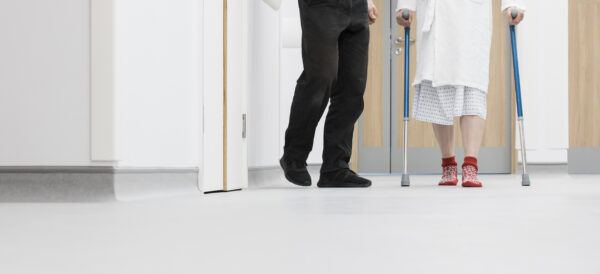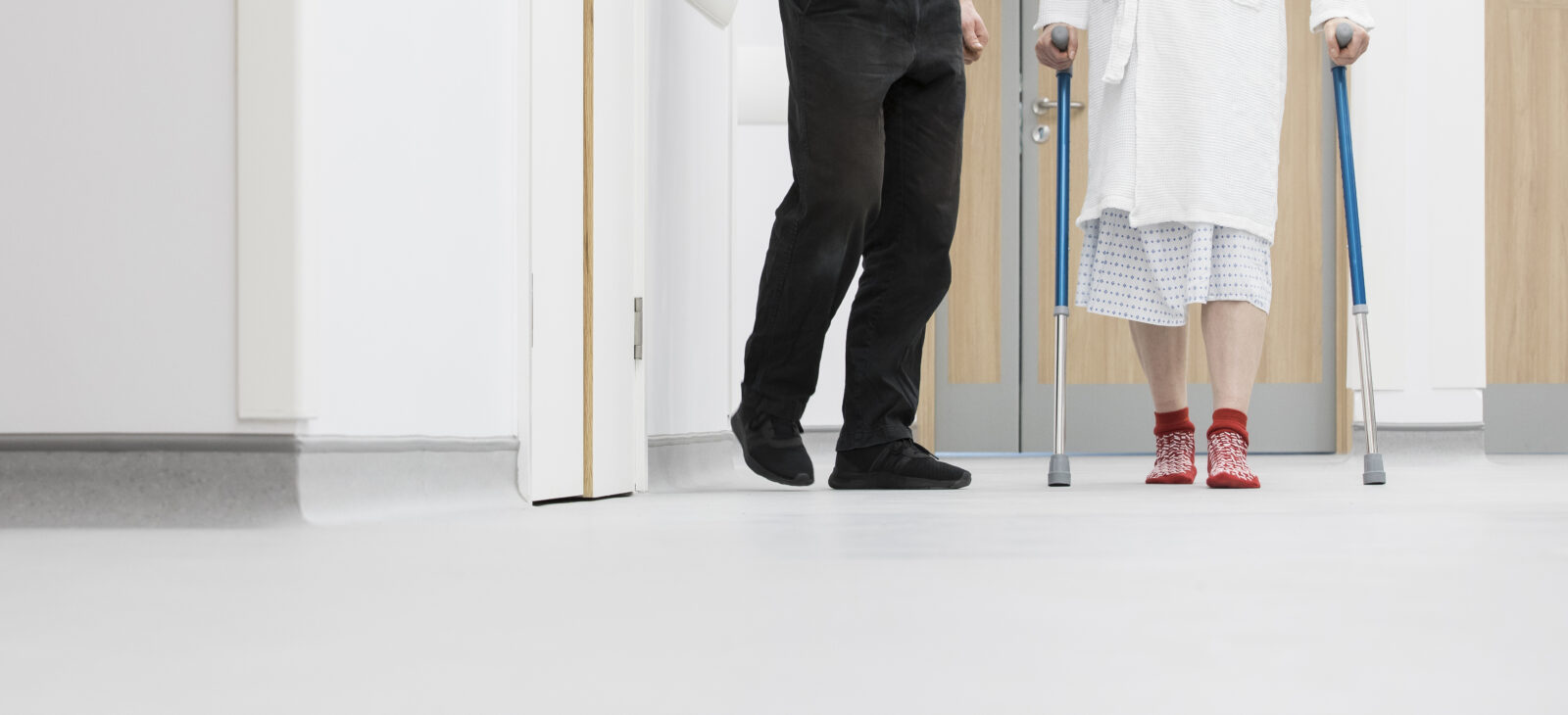Contact number: 020 7806 4060
What is a Cheilectomy?
A cheilectomy involves removing bone spurs (excess bone growth) from the big toe joint to improve movement and reduce pain. The procedure is commonly performed to treat hallux rigidus, a form of arthritis that causes stiffness and pain in the big toe.
Key benefits of a cheilectomy include:
- Reduced pain when walking or wearing shoes
- Improved joint movement and flexibility
- Prevention of further joint damage
The procedure is typically recommended when non-surgical treatments, such as orthotics, physiotherapy, or pain relief, no longer provide sufficient relief.
Cheilectomy at St John & St Elizabeth Hospital
At St John & St Elizabeth Hospital, we provide cheilectomy surgery as part of our specialised foot and ankle care. Our expert orthopaedic surgeons take a personalised approach, focusing on relieving your pain and restoring movement to meet your individual needs.
Why choose us for a cheilectomy?
- Specialist Foot Surgeons: Our experienced orthopaedic consultants specialise in treating conditions affecting the big toe joint.
- Patient-Centred Care: We focus on relieving pain and improving mobility through cheilectomy surgery, helping you return to your daily activities with greater comfort.
- Modern Facilities: Our hospital features state-of-the-art imaging and surgical facilities, ensuring accurate diagnosis and precise treatment for big toe joint conditions.
- Accessible Location: We are based in NW8 and serve patients from Hampstead (NW3), Kilburn (NW6), and across London.
We are committed to helping you move comfortably again with expert care and support throughout your recovery.
Consultants who perform Cheilectomy in London
How Much Does Private Cheilectomy Cost?
£2,995
Private Cheilectomy costs £2,995 at St John & St Elizabeth Hospital.
The price shown includes all costs associated with your treatment, from admission to discharge, but doesn’t include surgeon or anaesthetist fee.
Our hospital fee is guaranteed at the price quoted and valid for one month from the date issued, subject to pre-assessment.
How to pay for your treatment
If you’re… paying for yourself
Did you know you don’t need private medical insurance to come to St John & St Elizabeth Hospital? As a self-pay patient, you can access safe, outstanding quality health care at times to suit you.
For scans and tests, as well as to see most consultants, you’ll still need to be referred by a medical professional like your GP, but as a self-pay patient, the process is more straightforward. You won’t need authorisation from an insurance provider, and you’ll have greater choice of consultant and appointment times.
If you’re… insured
St John & St Elizabeth Hospital is approved by all major medical insurance companies. If you have a personal private health insurance policy, or your company provide it for you, you can use it to pay for your care from your initial consultation through to treatment, surgery and aftercare such as physiotherapy. Not all private health insurance plans cover the same things. It’s very important to check exactly what you are covered for with your insurance provider.
Frequently Asked Questions About Cheilectomy
St John & St Elizabeth Hospital is located in St John’s Wood (NW8), a well-connected area of Northwest London. We are conveniently accessible to patients from Hampstead (NW3), Kilburn (NW6), and beyond.
By Tube:
- St John’s Wood station (Jubilee Line) is just a 5-minute walk from the hospital.
- Finchley Road (NW3) and Kilburn stations (NW6) on the Jubilee Line provide excellent connections.
By Bus:
- Wellington Road: Routes 13, 46, 82, and 113 stop near St John’s Wood Underground Station, just a short walk from the hospital.
- Circus Road: Routes 46 and 187 stop close to the hospital’s Circus Road entrance.
- Abbey Road: Routes 139 and 189 stop near the junction where Grove End Road becomes Abbey Road, providing easy access.
Major Roads:
If you’re travelling from NW3 or NW6, major routes such as Finchley Road or Kilburn High Road offer a direct approach to the hospital.
Recovery typically takes 6 to 8 weeks. Most patients can bear weight on the foot soon after surgery, but full healing and return to normal activities may take up to 3 months.
As you won’t be able to drive, ensure that you have arranged for someone to take you home that day.
After surgery, you may also be given additional tablets for pain relief. Immediately after the procedure, you won’t be able to wear your shoes, and you’ll need special footwear to protect your foot in the healing process.
For the first few weeks, make sure that you rest and elevate your foot as much as possible. Movement restriction will be key here and you won’t be able to perform usual activities. Although it might be difficult to limit movement, it’s important that you do, so that the main joint and incision site has time to repair.
Two weeks after surgery, you’ll need to get your stitches removed and fresh wound covered. At this time, if there is some mild swelling, muscle tightness, or concerns of nerve damage and blood clots, make sure you let your healthcare provider and doctor know.
Whether it’s ankle surgery or toe surgery, wound healing takes some time for most patients – sometimes up to a year. It’s important that in your follow-up appointment you’re as honest as possible. That way, your doctor can provide relief with more anti-inflammatory medication, other nonsurgical treatments, or physical therapists.
If all is well and you’re pain-free during your follow-up appointment, you’ll be able to slowly use your foot more. Perhaps you can wear normal shoes again, try more strenuous joint movement, and explore gently walking and putting weight on the foot.
The procedure is performed under anaesthesia, so you won’t feel pain during surgery. Some swelling and mild discomfort are normal afterwards but can be managed with pain relief medication and rest.
A cheilectomy is recommended for patients with hallux rigidus (big toe arthritis) who experience pain, stiffness, or difficulty walking that has not improved with non-surgical treatments.
The procedure reduces pain, removes bone spurs, and improves mobility in the big toe, helping you return to daily activities with greater comfort and flexibility.
No, a cheilectomy is generally considered a minor surgery. It is a straightforward procedure performed to remove bone spurs from the big toe joint, often as a day-case surgery with minimal disruption to surrounding tissues.
Yes, a cheilectomy is often worthwhile for patients with hallux rigidus (big toe arthritis) causing pain and limited movement. The procedure relieves discomfort, restores mobility, and can delay or prevent the need for more extensive surgery in the future.
Medically reviewed by Mr Aria Ghassemi - MBBS MRCS FRCS MSc Dip (Imperial College)


